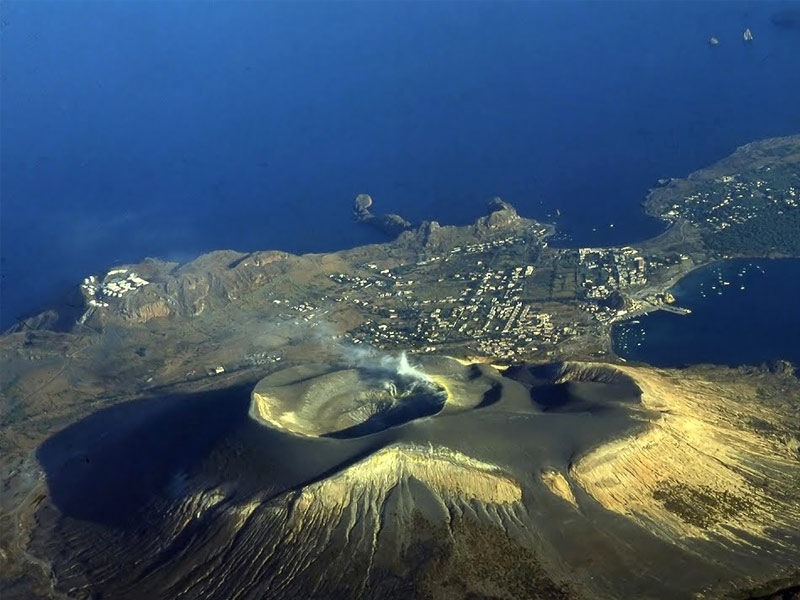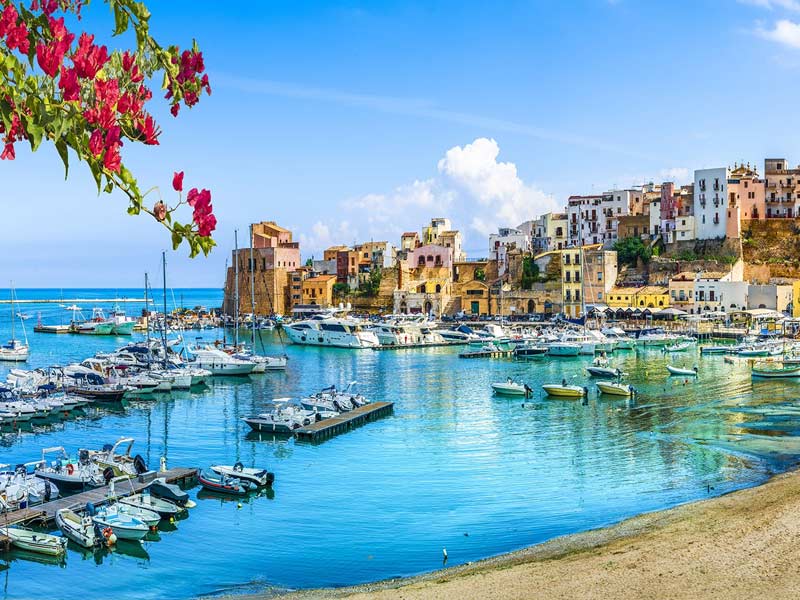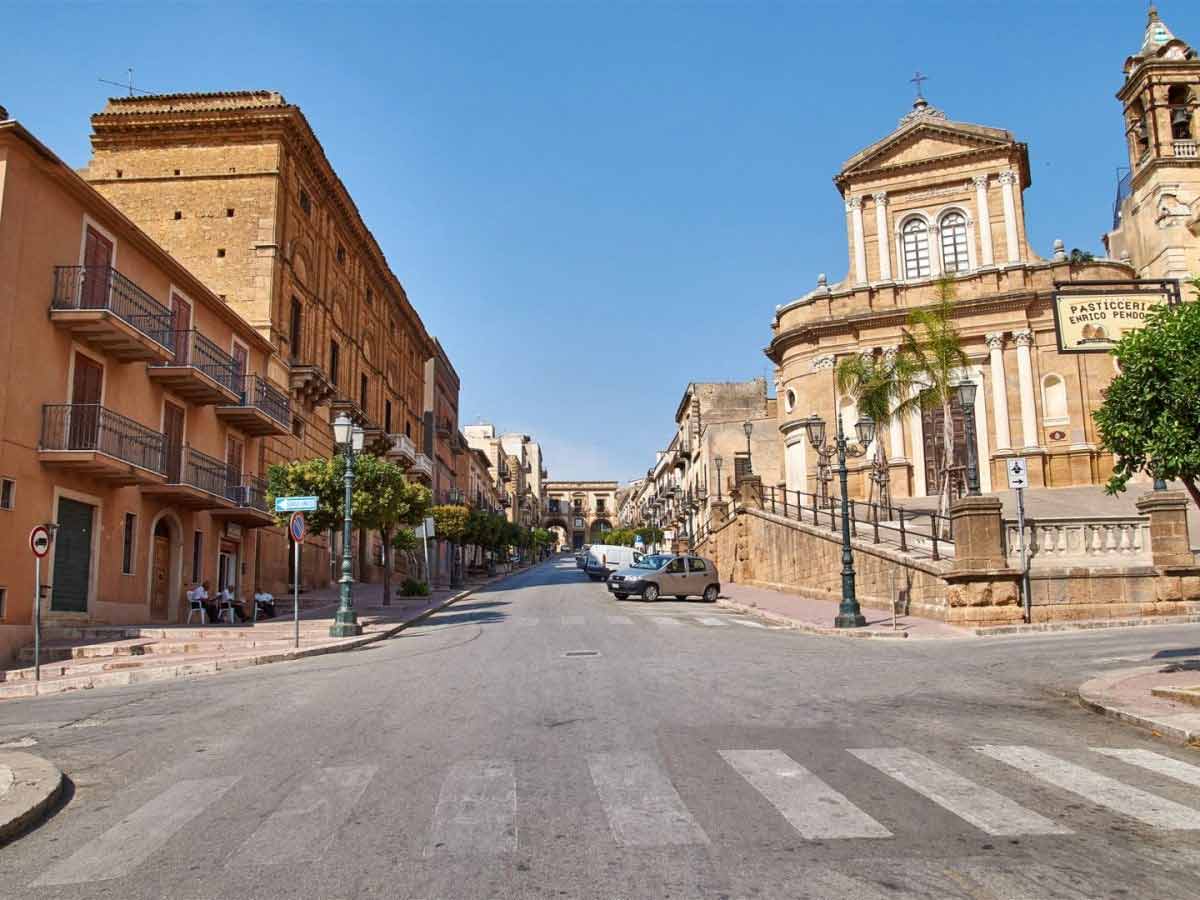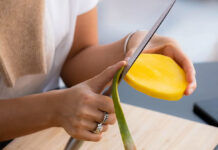Sicily is the biggest island in the Mediterranean Sea, with an area of up to 25,711 km2 and over 5 million (2022). Sicily separated from mainland Italy by the Strait of Messina. It is one of five autonomous regions, formally known as Regione Siciliana in Italian. Mount Etna, Europe’s most famous volcano with the most regular and intense eruptions, dominates the island’s terrain.

Sicily is brimming with superlatives, which refer to old global riches. For example, one of the three most perfect temples in the Greek world may be seen at Agrigento’s Valley of Temples. With almost 3,500 square meters of mosaics, Villa Romana del Casale in Enna is one of the best-preserved villas in the Roman Empire and a UNESCO World Heritage Site.
The twin cities of Ragusa and Modica are also notable for symbolizing Europe’s pinnacle of Baroque art. The beautiful mosaics and elegant cloister at Monreale are also considered masterpieces of European art. At the same time, Palermo’s Archeological Museum is regarded as one of Italy’s greatest.
Sicily’s Brief History

There have been numerous peoples inhabiting this mountainous and rich in flora and fauna island since the emergence of the earliest occupants, the ancient Sicanian. Following the Sicanians’ primordial civilization came the civilization of the Sicels, then the Elymians. They originated in West Asia (now Turkey) and were absorbed by the Greek army. For hundreds of years, humans fought for control of this enormous and gorgeous island, passing it from the Greeks to the Carthaginians, the Roman Empire, Arabia, Norman, France, Spain, and Austria… Until 1860, when Giuseppe Garibaldi united Italy and reclaimed Sicily.
Sicily is the cultural interchange of many different civilizations due to its excellent position and hundreds of years of shifting thrones; the Sicilian people are famed for their multi-racial variety and colorful culture. When you visit Sicily, you will see a merging of historic indigenous civilizations such as Sicanians, Sicels, and Elymians with invading civilizations such as Roman, Greek, Arab, Norman, Albania, France, and Spain.
Today, many people in Sicily are of Albanian descent since this ethnic group has inhabited and stayed here since the 16th century. Because the Greeks also colonized southern Italy and Sicily, Greek culture and civilization profoundly impacted Sicily. There are more Greek-style temples here than in Greece proper. As a result, the language of the Sicilians contains many alien components. Even the eye and hair colors of a substantial proportion of Sicilians (red hair and blue eyes) are thought to be Norman’s hereditary features. There are also a lot of people with Arab surnames. As a result, many Italians joke that Sicily isn’t Italian, and many Sicilians don’t identify as Italian either.
Isola Di Vulcano: Island of Volcanoes

The island was dubbed Thérmessa by the ancient Greeks, which means “Source of Heat,” It was also known as the forge of God Hephaestus in Greek mythology. The little island of approximately 21 square kilometers, located 25 kilometers off the northern coast of Sicily, is the nearest island to Sicily in the Aeolian Islands cluster of eight. There are various ports on the main island of Sicily from which to get a boat or ferry to the island. Still, you should go to Messina, the port closest to the island cluster, from whence you may take ferries or boats to the island.
Also Read, Bon Appetit: Tracing the roots of Italian Cuisine
Cefalu, a medieval fishing village

Cefalu is Sicily’s most picturesque and popular ancient fishing villages, with tiny meandering cobblestone alleys, modest beaches, and a gorgeous port. The Lavatoio – a public washing area, dating back to the 16th century in the Middle Ages – is the most magnificent feature in Cefalu. The laundry area was constructed near the mouth of the Cefalino estuary, which flows into the sea.
Palermo
Palermo, the capital of Sicily, is recognized for its fresh food and the excitement, generosity, friendliness, and kindness of the coastal people.
The Aeolian Islands

The Aeolian Islands are a must-see on any trip to Sicily. A volcanic archipelago of Sicily, Aeolian has pristine coastlines, volcanic black sand beaches, caves, and cliffs and a full range of amenities and tourist facilities such as mineral hot spring resorts water sports, and interesting relaxing fishing service.
Is it safe to visit Sicily?
There is no such thing as a completely safe nation. Still, you will be astonished to learn that security in Sicily is better than you assume. I lived in Sicily for a year and was never pickpocketed, stolen, or deceived, but when I landed in Rome, I was duped as soon as I stepped out of the airport. The proud Sicilians are truthful, kind, and highly regard foreigners. And what about the mafia? I didn’t notice any impact of this criminal group on regular life here.

However, because this is a very difficult issue, you should not be too flippant while discussing it with locals. There are fewer pickpockets in Sicily than in other popular tourist towns like Rome, Barcelona, and Paris. There are also fewer robbers in Sicily than in Naples. There is also no firefight as in the movies, most likely because citizens and tourists are not the targets of mafia gangs. However, you should caution when exploring slums or suburbs, which may not be as safe as central places.
What is the best way to go to Sicily?

The plane is the quickest and most effective method to go to Sicily. The island has two international airports: Palermo and Catania, which link to many important cities worldwide, and the most well-known airline is Alitalia, Italy’s national carrier.
Because there is no bridge linking the island to the mainland, there are no direct rail lines from mainland cities to Sicily. Because the distance from other parts of Italy is too great, using a bus will take long. Thus I do not propose this choice.




























